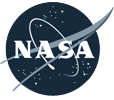

An astronaut on the International Space Station took this photograph on November 25, 2024, while orbiting over Quebec, Canada. Instead of looking straight down at the province, the astronaut pointed the camera toward the Moon.
At the time, sunlight illuminated 27 percent of the waning crescent Moon. That’s the same lunar phase visible that day to people on Earth’s surface. These perspectives are similar because the space station’s distance from Earth is negligible compared to its distance from the Moon.
However, there are some notable differences between ground- and station-based observations of the Moon. Because the space station orbits Earth at a speedy 28,200 kilometers (17,500 miles) per hour, astronauts witness many more moonrises and moonsets (and sunrises and sunsets)—16 of each in a 24-hour period.
Also, astronauts see the Moon without the apparent shape- and color-changing effects of Earth’s atmosphere and without clouds to potentially block the view. On the day that this photo was taken, clouds covered much of Quebec, including the ground directly below the station.
Since the time of this image, the Moon has completed an orbit around Earth and entered a waxing crescent phase by New Year’s Day 2025. Together, the Moon and Earth begin another journey around the Sun.
Astronaut photograph ISS072-E-277954 was acquired on November 25, 2024, with a Nikon Z9 digital camera using a focal length of 500 millimeters. It is provided by the ISS Crew Earth Observations Facility and the Earth Science and Remote Sensing Unit, Johnson Space Center. The image was taken by a member of the Expedition 72 crew. The image has been cropped and enhanced to improve contrast, and lens artifacts have been removed. The International Space Station Program supports the laboratory as part of the ISS National Lab to help astronauts take pictures of Earth that will be of the greatest value to scientists and the public, and to make those images freely available on the Internet. Additional images taken by astronauts and cosmonauts can be viewed at the NASA/JSC Gateway to Astronaut Photography of Earth. Story by Kathryn Hansen.